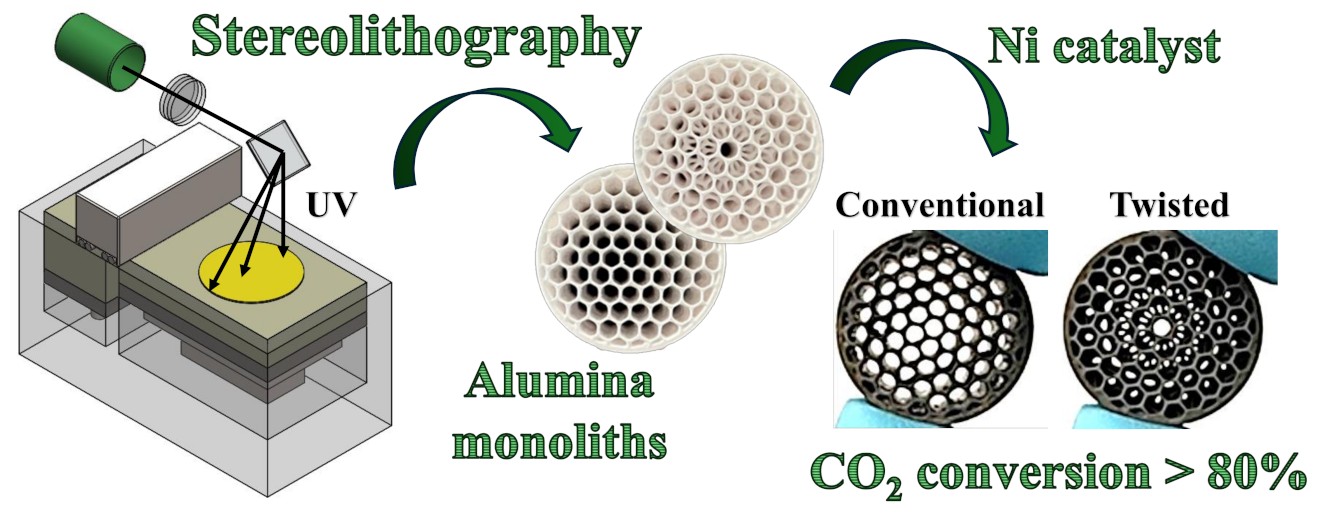This work presents the implementation of ceramic stereolithography 3D printing to generate catalytic supports to investigate the influence of the structured reactor design on its conversion efficiency for CO2 methanation. Alumina monolithic supports were fabricated by stereolithography using a non-linear channel geometry formed by an array of twisted elements, which was compared to the conventional monolith design. The catalytic performance of the 3D printed monoliths, functionalized with Ni as a catalyst material, was evaluated and complemented by CFD simulation, showing the strong correlation between the support design selection and CO2 conversion rates. A maximum CO2 conversion of 84% at 400 °C was achieved owing to the three-dimensional monolith design, which increased the catalytic activity of the system under high gas flow rates by creating a non-uniform reactant flow distribution with higher turbulence kinetic energy. Therefore, this work demonstrates the potential of ceramic 3D printing technologies to boost the catalytic device efficiency by implementing novel designs, not reproducible by conventional ceramic manufacturing approaches.
Reference:
E. Kabakci, N. Kostretsova, E. Morales, J. Diaz-Ruiz, A. Tarancón, J. Guilera, M. Torrell, 3D printed structured catalyst supports for enhanced CO2 methanation, Journal of Environmental Chemical Engineering, 13 (2), 1116047 (2025).
https://doi.org/10.1016/j.jece.2025.116047
3D printed structured catalyst supports for enhanced CO2 methanation – ScienceDirect
